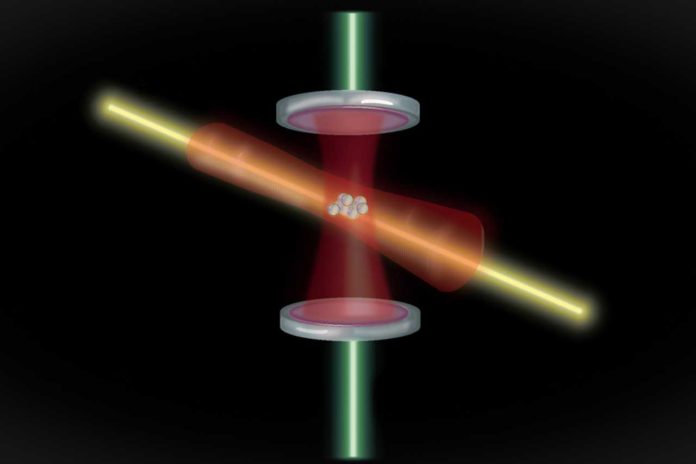MIT scientists have designed a new kind of atomic clock that could answer some mind-boggling questions, such as what effect gravity might have on the passage of time and whether time itself changes as the universe ages.
This new atomic clock measures atoms that have been quantumly entangled. And these atoms are correlated in such a way that is impossible according to the laws of classical physics, which allows the scientists to measure the atoms’ vibrations more accurately.
Atomic clocks use lasers to measure atoms’ vibrations, which oscillate at a constant frequency, like many microscopic pendulums swinging in sync. The best atomic clocks in the world keep time with such precision that they would only be off by about half a second today if they had been running since the beginning of the universe.
The new setup can achieve the same precision four times faster than clocks without entanglement.
Lead author Edwin Pedrozo-Peñafiel, a postdoc in MIT‘s Research Laboratory of Electronics, said, “Entanglement-enhanced optical atomic clocks will have the potential to reach a better precision in one second than current state-of-the-art optical clocks.”
“If atoms are entangled, their oscillations would tighten up around a common frequency, with less deviation than if they were not entangled. The average oscillations that an atomic clock would measure, therefore, would have a precision beyond the Standard Quantum Limit.”
Almost 350 atoms of ytterbium are entangled in this new atomic clock. The atoms oscillate at the same very high frequency as visible light, which means one atom vibrates 100,000 times more often in one second than cesium.
Using standard techniques, scientists cooled down the atoms and trapped them in an optical cavity formed by two mirrors. They then sent a laser through the optical cavity, where it ping-ponged between the mirrors, interacting with the atoms thousands of times.
Chi Shu, a co-author from MIT, said, “It’s like the light serves as a communication link between atoms. The first atom that sees this light will modify the light slightly, and that light also modifies the second atom and the third atom. Through many cycles, the atoms collectively know each other and start behaving similarly.”
When scientists conducted a similar experiment without entangling atoms, they found that the atomic clock with entangled atoms reached a desired precision four times faster.
Vladan Vuletic, the Lester Wolfe Professor of Physics, said, “You can always make the clock more accurate by measuring longer. The question is, how long do you need to reach a certain precision. Many phenomena need to be measured on fast timescales.”
“If today’s state-of-the-art atomic clocks can be adapted to measure quantumly entangled atoms, they would not only keep better time, but they could help decipher signals in the universe such as dark matter and gravitational waves, and start to answer some age-old questions.”
“As the universe ages, does the speed of light change? Does the charge of the electron change? That’s what you can probe with more precise atomic clocks.”
Journal Reference:
- Pedrozo-Peñafiel, E., Colombo, S., Shu, C. et al. Entanglement on an optical atomic-clock transition. Nature 588, 414–418 (2020). DOI: 10.1038/s41586-020-3006-1
